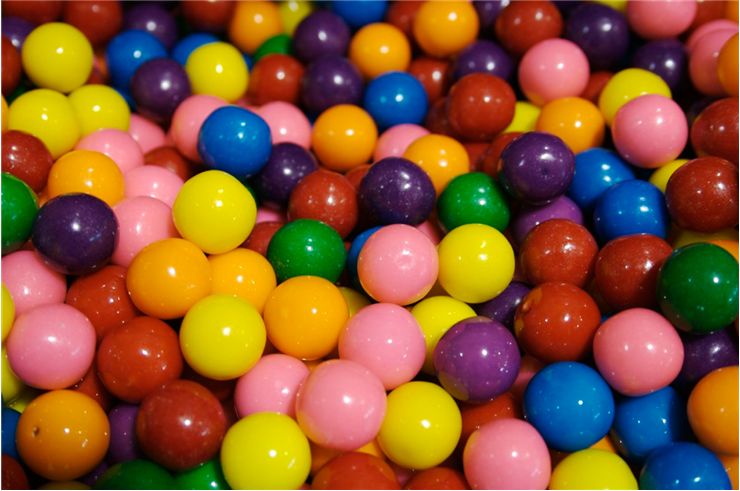Chewing Gum Ingredients
Companies carefully guard their recipes for making chewing gum, but all have the same basic ingredients. However, specific ingredients that give the gum a delicious taste are kept secret. The basic ingredients are gum base, softeners, sweeteners, and flavorings. The element that makes your gum 'chewable' is gum base. Gum base is the main ingredient in modern chewing gum.
Originally, chewing gum was made from the sapodilla tree's latex sap (chicle) or other tree saps. For many years, gum base was made from chicle, the chief ingredient in chewing gum. Today many modern chewing gums use rubber instead of chicle. In the middle 1900s, chemists learned to make synthetic rubber, which became a substitute for most natural rubber in chewing gums. Most gums are made from synthetic rubber or a combination of artificial and natural bases.

Softeners are added to retain moisture. The most popular softeners are glycerin or vegetable oil based. Those ingredients help prevent the gum from becoming hard or too stark.
Sweeteners are added to gum to give it that sweet flavor. Those ingredients are usually sugar, corn syrup, and even beet juice. There are many synthetic sweeteners, but the most used are xylitol, sorbitol, mannitol, and aspartame. Sugar-based sweeteners are probably healthier than artificial sweeteners.
A flavor ingredient in chewing gum has been found to provide long-lasting, high-intensity, high-quality flavor. The most used flavors in chewing gums are peppermint (called only mint), fruit, spearmint (a variation of mint flavor), and menthol (a mint-related flavor). Other flavors are synthetically created and perfected in the lab. The flavorings are added last.
Gum bases are mixed with other ingredients to make chewing gum.
Bubble gum contains more of the gum base and softener.
What precisely the ingredients in the chewing gum depend on the type of gum being made.

